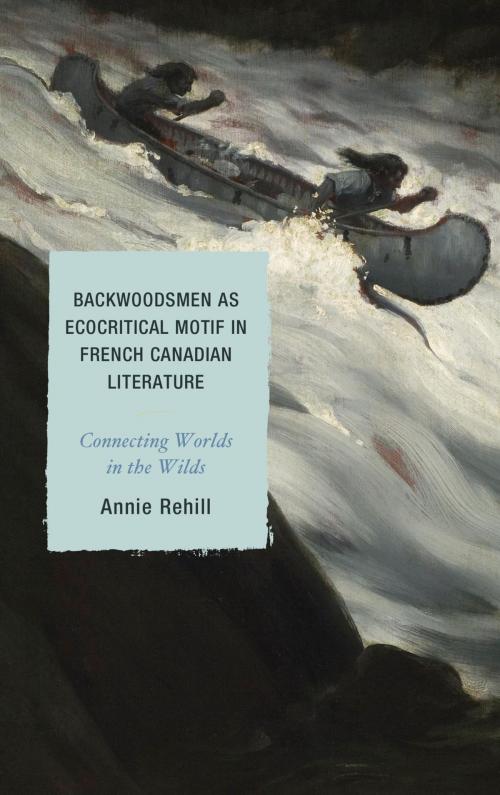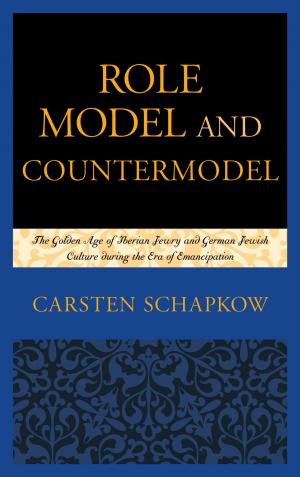Backwoodsmen as Ecocritical Motif in French Canadian Literature
Connecting Worlds in the Wilds
Fiction & Literature, Literary Theory & Criticism, Canadian, French, European| Author: | Anne Rehill | ISBN: | 9781498531115 |
| Publisher: | Lexington Books | Publication: | August 30, 2016 |
| Imprint: | Lexington Books | Language: | English |
| Author: | Anne Rehill |
| ISBN: | 9781498531115 |
| Publisher: | Lexington Books |
| Publication: | August 30, 2016 |
| Imprint: | Lexington Books |
| Language: | English |
In New France and early Canada, young men who ventured into the forest to hunt and trade with Amerindians (coureurs de bois, “runners of the woods”), later traveling in big teams of canoes (voyageurs), were known for their independence. Often described as half-wild themselves, they linked the European and Indian societies, eventually helping to form a new culture with elements of both. From an ecocritical perspective they represent both negative and positive aspects of the human historical trajectory because, in addition to participating in the environmentally abusive fur trade, they also symbolize the way forward through intercultural connections and business relationships. The four novels analyzed here—Joseph-Charles Taché’s Forestiers et voyageurs: Moeurs et légendes canadiennes (1863); Louis Hémon’s Maria Chapdelaine (1916); Léo-Paul Desrosiers’ Les Engagés du Grand Portage (1938); and Antonine Maillet’s Pélagie-la-Charrette (1979)—portray the backwoodsmen operating in a collaborative mode within the realistic context of the need to make money. They entered folklore through the 19th century literary efforts of Taché and others to construct a distinct French Canadian national identity, then in an unstable and continually disrupted process of formation. Their entry into literature necessarily brought their Amerindian business and personal partners, thus making intercultural connections a foundation of the national identity that Taché and others strove to construct and also mirror. As figures in literature, they embody changing ideas of the self and of the cultures and ethnicities that they connect, both physically and in an abstract sense. Because constructions of self-identity result in behavior, studying this dynamic contributes to ecocritical efforts to better understand human behavior toward both ourselves and our environment. The woodsmen and their Amerindian partners occupy the intriguing position of contributing to both damage and greater acceptance of the cultural Other, the latter of which holds the promise of collaboration and joint searches for sustainable solutions. Thus coureurs de bois and voyageurs, far from perfect models, can continue to serve as guides today.
In New France and early Canada, young men who ventured into the forest to hunt and trade with Amerindians (coureurs de bois, “runners of the woods”), later traveling in big teams of canoes (voyageurs), were known for their independence. Often described as half-wild themselves, they linked the European and Indian societies, eventually helping to form a new culture with elements of both. From an ecocritical perspective they represent both negative and positive aspects of the human historical trajectory because, in addition to participating in the environmentally abusive fur trade, they also symbolize the way forward through intercultural connections and business relationships. The four novels analyzed here—Joseph-Charles Taché’s Forestiers et voyageurs: Moeurs et légendes canadiennes (1863); Louis Hémon’s Maria Chapdelaine (1916); Léo-Paul Desrosiers’ Les Engagés du Grand Portage (1938); and Antonine Maillet’s Pélagie-la-Charrette (1979)—portray the backwoodsmen operating in a collaborative mode within the realistic context of the need to make money. They entered folklore through the 19th century literary efforts of Taché and others to construct a distinct French Canadian national identity, then in an unstable and continually disrupted process of formation. Their entry into literature necessarily brought their Amerindian business and personal partners, thus making intercultural connections a foundation of the national identity that Taché and others strove to construct and also mirror. As figures in literature, they embody changing ideas of the self and of the cultures and ethnicities that they connect, both physically and in an abstract sense. Because constructions of self-identity result in behavior, studying this dynamic contributes to ecocritical efforts to better understand human behavior toward both ourselves and our environment. The woodsmen and their Amerindian partners occupy the intriguing position of contributing to both damage and greater acceptance of the cultural Other, the latter of which holds the promise of collaboration and joint searches for sustainable solutions. Thus coureurs de bois and voyageurs, far from perfect models, can continue to serve as guides today.















